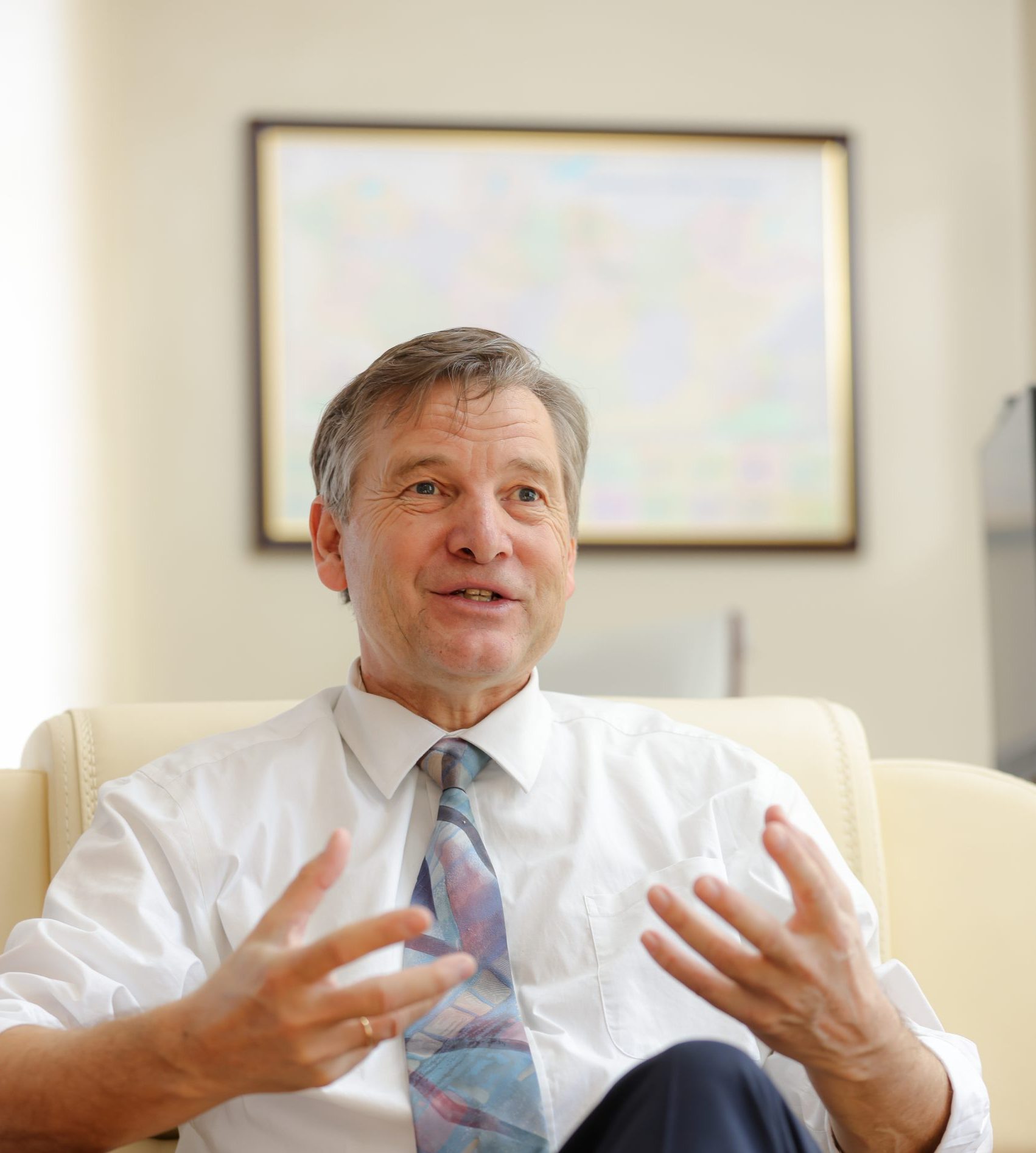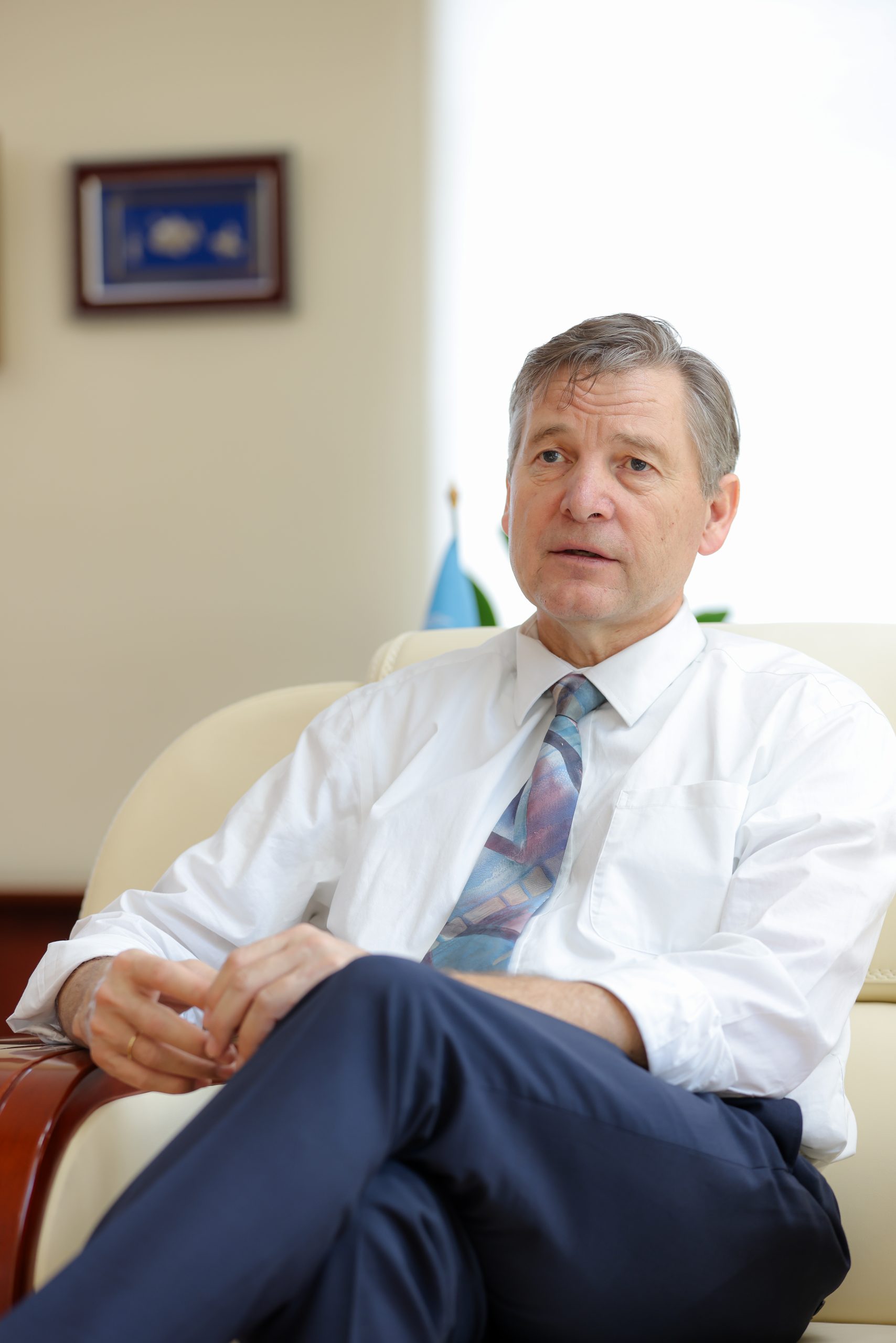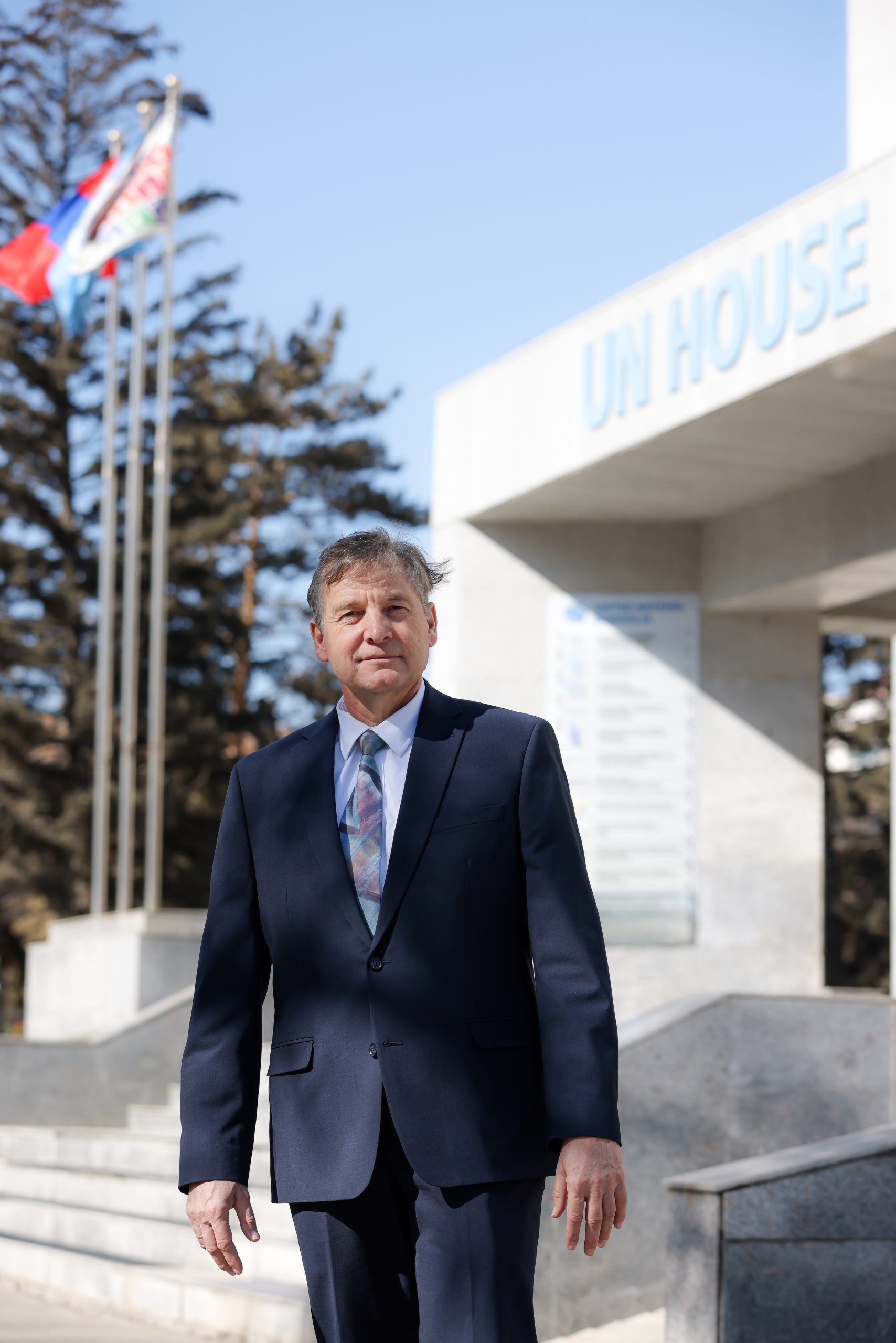Jaap van Hierden: Responsible tourism can ease the strain on ecosystems

We interviewed Jaap van Hierden, the UN Resident Coordinator in Mongolia, to discuss the development of environmentally conscious and sustainable tourism.
-The UN is celebrating its 80th anniversary these days. Could you briefly inform our readers about the decisions made by the UN General Assembly regarding the implementation of the Sustainable Development Goals and future directions? In Mongolia, there is a prevailing perception that sustainable development and green growth are primarily government responsibilities—what are your thoughts?
-UN80 is a moment to reflect on shared progress and the enduring partnership between Mongolia and the United Nations. Over the decades, this collaboration has strengthened institutions, advanced human development, and built resilience for both people and planet. The UN General Assembly has recently reaffirmed its commitment to accelerating the Sustainable Development Goals (SDGs) as we approach the 2030 deadline.
Key decisions include boosting financing for development, enhancing climate action, and fostering inclusive partnerships across sectors and borders. Importantly, achieving the SDGs is not solely the responsibility of governments.
It requires a whole-of-society approach and citizens, civil society, academia, and the private sector have vital roles to play. Businesses drive innovation, investment, and employment. They become powerful agents of change when aligning with sustainability principles such as: adopting green technologies, supporting inclusive growth, and promoting responsible tourism. The SDGs are not just a checklist. They are a blueprint for a better future. That future depends on shared responsibility and collective action.
-The Government of Mongolia has identified tourism as a key sector to diversify the economy and reduce dependence on mining, as well as to increase exports. Do you agree with this approach?
–Yes, I agree. Today, Mongolia’s economy is heavily reliant on mining, which accounts for approximately 30% of GDP, 94% of exports, 33% of government revenue, and 79% of foreign direct investment. Therefore, diversifying the economy is essential for long-term resilience. The services sector, particularly tourism, holds significant promise. Mongolia’s unique landscapes, nomadic heritage, and rich biodiversity offer a compelling foundation for eco-tourism and cultural tourism. By attracting international visitors, Mongolia can expand its services sector and help create sustainable livelihoods, especially in rural areas impacted by climate change and desertification.
-This year’s “ITM Mongolia 2025” international tourism expo is being organized under the theme “Sustainable Tourism – Central Asia,” with the aim of promoting sustainable development in the tourism sector and enhancing regional economic integration. This initiative is led by the Mongolian Tourism Association. How do you view this private sector initiative?
-I commend the Mongolian Tourism Association for organizing ITM Mongolia 2025 under the theme “Sustainable Tourism – Central Asia.” This initiative exemplifies the leadership role that private sector actors can play in advancing sustainable development. The UN actively engages businesses through initiatives like the UN Global Compact and the UN Guiding Principles on Business and Human Rights. In progressing SDG1 on poverty, for example, private sector contributions through decent job creation and inclusive business practices are indispensable. Responsible tourism, when developed thoughtfully, can reduce pressure on fragile ecosystems, support local economies, and promote environmental stewardship. It’s a win-win for people and planet.

-If development is not properly planned and managed, it can lead to negative consequences such as waste and environmental pollution. What do you consider the key issues in developing environmentally friendly and sustainable tourism? How can the UN collaborate in this area?
Sustainable tourism must be carefully planned to avoid unintended consequences such as waste, pollution, and ecosystem degradation. Key priorities include:
- Environmental safeguards: protect fragile landscapes and biodiversity through zoning, waste management, and low-impact infrastructure.
- Community involvement: ensure local residents benefit economically and culturally from tourism.
- Education and awareness: promote responsible traveler behavior and environmental ethics.
The UN can support Mongolia through technical assistance, policy guidance, and capacity building. We work with national and local stakeholders to integrate sustainability into tourism planning, and to promote models like eco-tourism and community-based tourism that preserve Mongolia’s natural beauty and combat land degradation.
–Introducing green technologies can be costly for businesses. However, green financing is growing in the financial markets. What are some effective international practices and mechanisms to improve financial accessibility and support green investment? Is there potential to implement these in Mongolia?
-While green technologies can be costly upfront, international experience shows that targeted financial mechanisms can unlock investment and improve accessibility. Effective practices include:
- Green Taxonomies: develop clear classification systems, such as Mongolia’s own Green Taxonomy, to help financial institutions identify eligible green projects.
- Blended Finance Models: combine public and private capital to de-risk investments through concessional loans or guarantees.
- Green Bonds and Sustainability-Linked Loans: mobilise capital while linking financial terms to environmental performance.
Mongolia is making strong strides. The National Sustainable Finance Roadmap, the Green Taxonomy and the work of the Mongolian Sustainable Finance Association (MSFA) provide a solid foundation.
With continued international support and alignment with global standards, Mongolia can expand green finance and attract sustainable investment. And especially so in sectors like responsible tourism, which offer both environmental and economic returns.
-Another aspect of sustainable development is increasing local community participation. Due to desertification and climate change, herders need alternative income sources beyond traditional livelihoods. Could tourism be a viable solution?
-Yes. If managed well, tourism offers a viable alternative income source that complements Mongolia’s cultural heritage and natural assets. Community-based tourism can empower rural residents, including herders, to share their traditions, host visitors, and generate income without overexploiting the land. By promoting responsible tourism, such as guided experiences, homestays, and eco-tours, Mongolia can reduce pressure from overgrazing and support land restoration. The UN supports such models through inclusive development programs, capacity building, and partnerships that link local communities to sustainable tourism markets.
–We should also discuss responsible travel and responsible travelers. What kinds of public awareness and behavioral change initiatives would be most effective, and at what level should they be implemented?
–Responsible travel begins with responsible travelers. Public awareness campaigns and behavioral change initiatives are essential to instill respect for nature, culture, and local communities. Effective approaches include:
- National campaigns: promote responsible tourism through media, schools, and public events.
- Local engagement: train guides, hosts, and community leaders to model and promote sustainable practices.
- Digital platforms: use social media and travel apps to share tips, stories, and guidelines for respectful travel that “leaves no trace behind”.
The UN can support these efforts by providing global best practices, facilitating partnerships, and helping design inclusive messaging that resonates with diverse audiences.
-With support from Rio Tinto Mongolia, UNESCO has launched a project to establish a geopark in Ömnögovi Province. Could you share the significance of this project?
–The project “Promoting Sustainable Tourism in Mongolia through UNESCO Cultural and Geo Heritage” supported by Rio Tinto is a landmark initiative. It aims to strengthen post-C19 tourism resilience by leveraging Mongolia’s cultural and geological heritage. Mongolia currently has no UNESCO Global Geopark. This project supports capacity building and awareness to help establish one. Geoparks promote sustainable development, preserve geological heritage, and support local economies. And do so while enhancing education, climate adaptation, and public awareness. They are a model for how tourism can protect nature, empower communities, and celebrate Mongolia’s unique identity.

-If major private enterprises propose initiatives similar to the geopark project—focused on environmental protection and tourism development—can they expect support and collaboration from the UN?
–Yes, the UN welcomes innovative proposals from the private sector that align with sustainability goals recognizing that businesses play a vital role in driving innovation, advancing technology, and mobilizing resources in tackling global challenges. We work closely with governments to align private investment with national development priorities, while also supporting companies in integrating sustainability into their core operations. A good example of this is the UNESCO Geopark project, which demonstrates the impact of effective public-private partnerships. We remain open to explore collaborations that promote environmental protection, sustainable tourism, and inclusive development.
-Next year, Mongolia will host the COP17 international conference. Over 10,000 participants are expected, including heads of state and high-level officials from more than 170 countries, along with international media agencies. What is the significance of Mongolia hosting COP17? What preparations are necessary?
-Hosting COP17 is a historic opportunity for Mongolia. It places the country at the center of global climate dialogue and showcases its leadership in sustainability and land restoration. Over 7,000 participants including heads of state, high-level officials, and international media will attend. This visibility can attract investment, strengthen partnerships, and elevate Mongolia’s voice on climate resilience and land restoration. Preparations should focus on:
- Infrastructure and logistics: ensure smooth operations and accessibility.
- Policy and messaging: articulate Mongolia’s climate priorities and achievements.
- Stakeholder engagement: involve civil society, youth, and private sector in the lead-up and legacy of COP17.
Responsible tourism can be a central theme, showcasing how sustainable travel supports climate goals, protects landscapes, and empowers communities. With thousands of delegates from around the world, Mongolia has a unique chance to present itself as a premier eco-tourism destination. Developing tailored travel packages will allow visitors to experience the country’s natural and cultural richness firsthand. To support this, a nationwide clean-up campaign may be needed to remove plastic waste and improve roadside and countryside cleanliness. Proper management of waste collection sites will also be essential to prevent (wind driven) pollution and preserve Mongolia’s pristine environment.